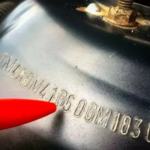In usually used monolithic structures, only a hinge connection can be called a prefabricated connection, so the first type is nothing from the usual structures of foundations. Structures – simplified articulated joints; Here, concrete takes on all horizontal power. To be able to rotate the rack, the seams between the column and the foundation are poured with rather elastic material: abscal or asphalt concrete. Thus, the recess is occupied by the material and there is no place to penetrate moisture, which is very important to protect concrete from destruction.
The depth of the hollow should be approximately 0.5 smaller cross -sectional size of the column below, but not more than 25 cm, since
Otherwise, when turning, the columns become noticeable deformations of the gap between the columns and the foundation. The gap between the body and the foundation shoe should be about 2 – 3 cm.
Flapped (hard) foundations. A rigid connection of the column with the foundation is carried out either by deep sealing the column into the body of the foundation or a figure outline of the joint of the column with the foundation. The gap between the column and masonry is poured with cement mortar.
When designing foundations, all kinds of tides, quarters, etc. must be avoided. p., compliance with the assembly work.
Types of foundations with simple light reinforcement. The reinforcement is located quite constructively, since the height of the foundations compared to the size of the Plan is so insignificant that the foundation could be concrete. The column transfers the load on the foundation not only with its end, but also the side sides. The adhesion forces developing on the side sides perceive a large share of the load from the column, and the load on the end of the rack is insignificant. The disadvantage of the described foundations is the absence of a distribution grid and the upper part of the foundation plate.
When determining the thickness of the foundation plate under the end of the column, it is necessary to calculate the stove with a column, allowing to cut no more than 7.5 kg/cm2.






